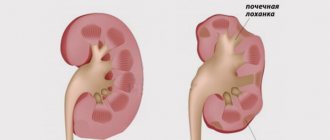Hypotrophic changes in the body are the most severe pathological process. It should be noted that malnutrition is not an independent disease. It occurs as a result of certain processes in the body. Which is a violation of the functional features of nutrition.
Nutrition must be complete. If these rules are not followed, malnutrition occurs. It is usually associated with a lack of adequate food. And also with the lack of quality of food. Food must ensure that the body absorbs all the substances it needs.
Hypotrophy is chronic. Then the network can continue for a long time. Therefore, a long-term absence of substances necessary for the body leads to irreversible processes. These processes are associated with the formation of the following factors:
- slow weight response;
- weight loss;
- decreased growth;
- metabolic disease.
A child, especially in the first year of life, may not gain enough weight. This is considered a pathology. And the necessary treatment is required.
Symptoms
Symptoms of malnutrition: 1 - healthy child;
2 — malnutrition of the 1st degree; 3—grade 2 malnutrition; 4 - grade 3 malnutrition The clinical picture of fetal malnutrition manifests itself in the form of disruption of several systems at once. First of all, symptoms appear in the gastrointestinal tract:
- bloating;
- refusal to eat, poor appetite;
- nausea and vomiting;
- sudden weight loss.
As the disease develops, the clinical picture is supplemented by the following symptoms:
- poor sleep;
- impaired coordination of movements;
- decreased muscle tone;
- sudden mood swings in the child;
- emotional unstable background.
Also, against the background of such a clinical picture, the protective functions of the body sharply decrease in young children. Therefore, a child under one year old becomes easily vulnerable to any infections and viral pathological processes.
Paratrophy
Paratrophy is a disease characterized by excess weight in a child. This is a consequence of chronic malnutrition of infants in the first year of life, who, in comparison with established norms, have increased body weight.
In children, paratrophy occurs before the age of 3 years, especially if body weight is 10% or more higher than the normative data.
Degrees of paratrophy:
Paratrophy 1st degree: the amount of excess body weight is 11-12%
Paratrophy 2nd degree: body weight exceeds by 21-30%
Stage 3 paratrophy: body weight increased by 31% or more.
Classification
Depending on the time of occurrence, malnutrition is divided into prenatal and postpartum. Prenatal (prenatal) or congenital malnutrition is nothing more than intrauterine growth retardation syndrome (IUGR). It develops when the blood supply to the fetus through the uterus and placenta is disrupted (fetoplacental insufficiency).
There are 3 options for expressing delayed fetal development:
- The hypotrophic variant is characterized by body length and circumference of the head, chest and abdomen corresponding to the gestational age below normal;
- The hypoplastic variant reflects the proportional but reduced parameters of the child;
- With the dysplastic variant, developmental defects and fetal deformities are observed.
Postnatal (postpartum) malnutrition is divided into degrees in accordance with the lack of body weight. At grade 1, the lack of body weight is 10–20%;
- With grade 2 – 20–30%;
- At grade 3 over 30%.
The child's actual weight is compared with the weight calculated using tables of normal monthly weight gain. For example, body weight at birth is 3700 g, at the age of 3 months 5300 g. According to the table, the child should gain 600 g + 800 g + 800 g in 3 months, a total of 2200 g. Normal body weight at 3 months for this child should be 5900 g .
The mass deficit is 5900–5300, that is, 600 g, which corresponds to 10% according to the proportion formula:
- 5900 – 100%;
- 600 – 10%, therefore, the child has 1st degree malnutrition.
Hypostature
Hypostature is a uniform lag of a child of the first year of life in height and body weight, in comparison with the average normative indicators of the corresponding age. At the same time, body weight for this height is close to normal. However, such children have a satisfactory state of skin nutrition and turgor.
Body length in hypostatura is 5–10 cm less than normal (in older children, 10–20 cm). Moreover, the actual body weight, although less than the average, proportionally corresponds to the child’s height.
Symptoms of childhood malnutrition
Usually, symptoms of malnutrition in newborns are determined already in the maternity hospital. If the disease is acquired and not congenital, attentive parents, even at home, will be able to understand by some signs that their child is sick. Symptoms depend on the form of the disease.
I degree
- satisfactory state of health;
- neuropsychic development is quite consistent with age;
- loss of appetite, but within moderate limits;
- pale skin;
- decreased tissue turgor;
- thinning of the subcutaneous fat layer (this process begins from the abdomen).
II degree
- impaired activity of the child (excitement, lethargy, delayed motor development);
- poor appetite;
- pallor, peeling, sagging skin;
- decreased muscle tone;
- loss of tissue turgor and elasticity;
- disappearance of the subcutaneous fat layer on the abdomen and limbs;
- dyspnea;
- tachycardia;
- muscle hypotension;
- frequent otitis, pneumonia, pyelonephritis.
III degree
- severe exhaustion;
- atrophy of the subcutaneous fat layer throughout the child’s body;
- lethargy;
- lack of reaction to banal stimuli in the form of sound, light and even pain;
- severe growth retardation;
- neuropsychic underdevelopment;
- pale gray skin;
- dryness and pallor of the mucous membranes;
- muscles atrophy;
- loss of tissue turgor;
- retraction of the fontanelle, eyeballs;
- sharpening of facial features;
- cracks in the corners of the mouth;
- violation of thermoregulation;
- frequent regurgitation, vomiting, diarrhea, conjunctivitis, candidal stomatitis (thrush);
- alopecia (baldness);
- Hypothermia, hypoglycemia, or bradycardia may develop;
- infrequent urination.
If malnutrition is detected in a child, an in-depth examination is carried out to clarify the causes of the disease and appropriate treatment. For this purpose, consultations with pediatric specialists are prescribed - a neurologist, cardiologist, gastroenterologist, geneticist, infectious disease specialist.
Various diagnostic studies are carried out (ECG, ultrasound, EchoCG, EEG, coprogram, biochemical blood test). Based on the data obtained, therapy is already prescribed.
Hypotrophy
Hypotrophy is a chronic disorder of nutrition and digestion, accompanied by a violation of the metabolic and trophic functions of the body and characterized by a decrease in food tolerance and immunobiological reactivity, and delayed physical and psychomotor development.
Congenital (intrauterine) malnutrition is a chronic nutritional disorder of the fetus, which is accompanied by delayed physical development, metabolic disorders, decreased immunological reactivity due to insufficiency of placental circulation, and exposure to adverse factors on the part of the mother. Clinically manifested by thinning of the subcutaneous fat, an increase in skin folds on the neck, limbs, around the joints and a decrease in their thickness, general hypotension, perioral cyanosis, shortness of breath, the presence of clearly demarcated bone formations, a decrease in the weight-height index (below 60).
Acquired malnutrition is a chronic nutritional disorder characterized by a cessation or slowdown in the increase in body weight, the progressive disappearance of the subcutaneous fat layer, a violation of body proportions, digestive function, metabolism, a decrease in specific and nonspecific body defense factors, a predisposition to the development of other diseases and a delay in neurological development. mental development. Causes: malnutrition (malnutrition, difficulty eating), infectious factors, toxic factors, anorexia as a consequence of mental disorders, digestive disorders, increased nutritional needs, metabolic diseases, IDS.
In pathogenesis, the leading role belongs to profound disorders of all types of metabolism and changes in internal organs. Under the influence of predisposing factors, suppression of the secretion of digestive juices is noted. Digestive substances entering the body cease to be digested and are not completely absorbed. The threshold of food tolerance (tolerance) decreases, gastrointestinal motility disorders easily occur, food is retained in the stomach, persistent diarrhea appears, followed by “hungry” diarrhea. As a result, the body receives an insufficient amount of complete protein, vitamins, and microelements, which disrupts the synthesis of enzymes, hormones, and the humoral and endocrine regulation of metabolic processes. Dysproteinemia, deficiency of enzymes and vitamins, especially ascorbic acid, reduces the activity of tissue metabolism, tissue oxygen consumption and leads to the accumulation of under-oxidized metabolic products with the development of metabolic acidosis, lipid peroxidation is activated, free radical compounds accumulate in the blood, damaging cell membranes and disrupting metabolic processes. cellular level. The body's resistance decreases and a state of endogenous toxicosis develops. Against this background, a secondary infection easily develops and a toxic-septic condition can develop, which is the most common cause of death.
The classification is based on the assessment of body mass deficiency:
I degree – the deficiency is 11-20%, II – 21-30%, III – 31% or more.
Clinical manifestations:
syndrome of trophic disorders (lack of body weight, to a lesser extent - body length, imbalance of body build, impaired skin elasticity, tissue turgor, signs of hypovitaminosis, thinning of the subcutaneous fat layer and muscles),
decreased food tolerance (decreased appetite up to anerexia)
decreased immunobiological reactivity (anemia, IDS) and symptoms of changes in the functional state of the central nervous system (impaired emotional tone and neuro-reflex excitability, muscle hypo- and dystonia, hyporeflexia, tempo lag in psychomotor development).
Clinical symptoms depend on the degree of body weight deficiency.
Hypotrophy of the first degree is revealed, as a rule, only after a careful examination of the child. Usually his condition is satisfactory, his appetite is moderately reduced, his skin is smooth, elastic, pale, his internal organs and physiological functions are without visible abnormalities. Tissue turgor and the thickness of subcutaneous fat are reduced in the abdomen, but preserved on the face and limbs. Upon additional examination, dysproteinemia and decreased activity of digestive enzymes are noted.
Second degree hypotrophy is characterized by a decrease in the child’s activity and emotional tone, apathy, lethargy, adynamia, delayed psychomotor and speech development, and a pronounced decrease in appetite. The skin is pale, dry, flaky, skin elasticity and tissue turgor are reduced, and muscle hypotension is pronounced. Subcutaneous fat is clearly reduced or absent on the abdomen and limbs, preserved on the face. The curve of body weight gain is flattened. Tachypnea, arrhythmia of respiratory movements, muffled heart sounds, a tendency to tachycardia and hypotension, and thermoregulation disorders are often observed. With force feeding, vomiting occurs, and constipation is often observed. These symptoms are accompanied by hypochromic anemia, hypo- and dysproteinemia, and a significant decrease in the activity of digestive enzymes. Intercurrent diseases are often associated, complicated by otitis media, pyelonephritis, and pneumonia.
III degree hypotrophy is accompanied by significant disturbances in the general condition of the child: drowsiness, indifference to the environment, irritability, negativism, increased tearfulness, a sharp lag in psychomotor development, loss of already acquired skills and abilities, and complete anorexia. In appearance, the child looks like a skeleton, covered with dry skin of a pale gray color, hanging in folds on the buttocks and thighs. The face is “senile”, wrinkled. Subcutaneous fat is absent even on the face. The weight gain curve is flat or falling down. The tissues completely lose turgor, the muscles are atrophic, but their tone is usually increased due to electrolyte balance disorders and damage to the central nervous system. Signs of dehydration are expressed: thirst, retraction of the large fontanel and eyeballs, aphonia, dryness of the conjunctiva and cornea, bright coloring of the mucous membrane of the lips, cracks in the corners of the mouth (“sparrow’s mouth”). Body temperature is low and fluctuates according to the ambient temperature; sometimes there are unmotivated rises to subfebrile levels. Breathing is shallow, arrhythmic. The pulse is rare, weak, blood pressure is low, heart sounds are muffled. The abdomen is tense, retracted or bloated. The liver and spleen are reduced in size. Dyskinetic disorders are often observed: regurgitation, vomiting, frequent loose stools. Urination is rare, in small portions. Due to blood thickening, hemoglobin and red blood cells are within normal limits or increased, ESR is slow. The urine contains a large amount of chlorides, phosphates, urea, and sometimes acetone is found.
Differential diagnosis is carried out with malabsorption syndrome, hereditary or congenital enzymopathies and endocrine diseases.
Treatment of children with grade I malnutrition is carried out at home, and with grade II-III - in a hospital.
Proper organization of child care is necessary (walks, warm baths, massage and gymnastics, positive emotions).
The basis of treatment is diet therapy, which is carried out in three stages: establishing food tolerance; stage of increasing food loads; complete removal of the child from malnutrition.
At the first stage, unloading and minimal feeding are carried out. The calculation of the main ingredients is carried out in this way: at stage I, proteins and carbohydrates are calculated for the proper body weight, and fats are calculated for approximately the proper weight (actual + 20% of it); at degree II - proteins and carbohydrates to approximately the proper level, and fats to the actual value; with III, all ingredients are calculated only on the actual mass.
At the second stage, a gradual transition to enhanced feeding is carried out to restore the body's reserve capabilities. The calculation of the main ingredients is made as follows: at stage I, proteins, fats and carbohydrates are calculated for the proper body weight; in degree II - proteins and carbohydrates to the required weight, fats - at the beginning of the period to approximately the required weight, and then to the required weight; with III, all ingredients are calculated only at approximately the proper weight, and then at the proper weight.
Symmetrical and asymmetrical hypotrophy
During intrauterine development, both symmetrical and asymmetrical hypotrophy can develop.
Symmetrical malnutrition develops with chromosomal abnormalities, developmental defects, bad habits of the mother, lack of nutrition and manifests itself in the early stages of pregnancy. Moreover, all organs have the same hypotrophy.
The diagnosis of asymmetric malnutrition is usually established after the 28th week of pregnancy, and the development of fetal organs has different physiological indicators - the child’s abdomen lags behind in development, but the limbs and head correspond to the norm.
Such malnutrition can occur for social and domestic reasons, as a result of the mother’s illness, her bad habits, or during a complicated pregnancy.
Prevention of malnutrition in children
Prevention of both intrauterine and acquired malnutrition begins with the fight for the woman’s health and for maintaining long-term breastfeeding.
The following areas of prevention are tracking basic anthropometric indicators (height, weight), monitoring children’s nutrition.
An important point is the timely detection and treatment of childhood diseases, congenital and hereditary pathologies, proper child care, and prevention of the influence of external factors in the development of malnutrition.
Things to remember:
Mother's milk is the best and irreplaceable food for a baby up to one year old. At 6 months, the menu should be expanded to include plant foods (see how to properly introduce complementary foods to a child). Also, do not switch your child to adult food too early. Weaning a child from breastfeeding before 6 months is a crime against the baby; if there are problems with lactation, the child does not have enough milk, you must first put it to the breast and only then supplement it. Diet diversity is not different types of cereals and pasta throughout the day
A nutritious diet consists of a balanced combination of proteins (animal, vegetable), carbohydrates (complex and simple), fats (animal and vegetable), that is, the diet must include vegetables, fruits, meat, and dairy products. As for meat - after a year it must be present in the child’s diet - this is an irreplaceable product, there can be no talk of any vegetarianism, only meat contains compounds necessary for growth, they are not produced in the body in the quantities needed for growth. full development and health. Important!!! There are no safe medications “just” to reduce or increase a child’s appetite.
Diagnostics
Hypotrophy is diagnosed based on the clinical picture. That is, the external severity of the disease matters. In this case, the general condition of the child is taken into account.
When diagnosing this disease, anamnesis is examined. The history concerns the nutrition in the child's diet. If the child’s diet is not complete, then we can talk about malnutrition. If the diet is not of high quality, then we can talk about the possibility of developing hypotrophic changes.
To make a diagnosis of malnutrition, it is important to examine the child for the presence of an infectious disease. For this purpose, general analyzes are carried out. In the blood and urine, the inflammatory process is often of particular significance.
Coprogram also plays an important role. The coprogram allows you to determine the pathological nature of feces. Its bacteriological study indicates damage to the intestines by certain types of pathogens. Including E. coli.
If the disease is caused by a pathology of the respiratory system, then diagnosis may include:
- sputum examination;
- serological studies;
- instrumental research.
Radiography may be required. Especially if pneumonia is suspected. Diagnosis of malnutrition may include measurement of weight and heart rate. For this use:
- heart rate measurement;
- weight measurement.
The most significant factor in the disease is weight loss. Therefore, diagnosis includes weight measurement. In this case, malnutrition can be immediately established. But with the first degree of malnutrition, additional research methods are used.
go to top
Prevention
Prevention has always been and remains preferable and more economical than treatment. Prevention of malnutrition in children consists of adequate breastfeeding, timely introduction of supplementary feeding and complementary feeding, and proper care of the baby.
Oddly enough, but prevention must begin from the childhood of future parents. A balanced diet, physical education and sports, work and rest schedule, sleep, avoiding stress, giving up bad habits, timely sanitation of foci of infection, personal and intimate hygiene, planned pregnancy and carrying it out under the supervision of a specialist in compliance with all recommendations is an effective prevention of complications and guarantee of the birth of a healthy child.
Causes
What are the main reasons for the development of malnutrition in children? The main reasons for the development of malnutrition include malnutrition. Here we mean both the qualitative characteristics of nutrition and the quantitative characteristics of nutrition.
The etiology of malnutrition may also be associated with the presence of inadequate or inadequate nutrition in the child’s menu. The following factors are of great importance:
- not full-fledged milk;
- diluted dairy products;
- insufficient amount of vitamins and fat in food;
- lack of protein nutrition.
It should be taken into account that the presence of concomitant infectious pathology also causes malnutrition. After all, it is the infection that contributes to metabolic disorders. Pathologies of the respiratory system are of particular importance.
Among the pathologies of the respiratory system, pneumonia is distinguished. Child care plays a big role. Especially for weakened children. Child care must be of high quality.
go to top
Treatment methods
Hypotrophy is an eating disorder, the treatment of which can be divided into 3 main stages:
- Restoring nutritional status. At this stage, treatment includes providing foods that are easy to digest. They must be well distributed throughout the day to quickly and effectively restore nutritional status.
- Nutrition rehabilitation. Restoring normal feeding of the child, eliminating lactose, teaching the mother the correct nutritional status of the child, feeding the child with adapted milk formulas.
- Hospitalization. If there are associated conditions such as hypoglycemia, dehydration, infection, hypothermia, anemia, vitamin or mineral deficiency, or electrolyte imbalance, the patient must be admitted to the hospital under medical supervision.
Medications
Severe cases of malnutrition require hospital treatment with controlled nutrition. The main task is to restore fluid-electrolyte balance and treat infections.
The following methods are used for this:
- treatment with antibiotics in the presence of foci of infection;
- solutions with amino acid complexes or protein components of blood intended for intravenous administration;
- oral infusion of macronutrients (vitamins, minerals, microelements);
- parenteral nutrition in case of malabsorption (the choice of standard mixtures for enteral nutrition depends on the nature and severity of the disease) is prescribed to patients with severe forms of protein deficiency in diseases of the gastrointestinal tract or in the postoperative period.
Children experiencing diarrhea receive intravenous rehydration. Feeding patients is carried out according to a special scheme, often, but little by little. Stage-by-stage feeding is carried out with milk formulas with additives.
- B vitamins. On the first day, a vitamin dose increased by 2 times is given.
- Magnesium, 0.4 mg/kg body weight, is prescribed for 1 week.
- Administration of iron orally or intramuscularly.
When treating elderly patients, attention should be paid to the cause of the excessive production of cytokines. As a rule, this is caused by diseases such as cancer, AIDS
Drugs are prescribed for a short course, no more than 3 weeks:
- Megestrol acetate is prescribed for the palliative treatment of breast cancer, for the treatment of anorexia, and weight loss.
- Medroxyprogesterone, used for cancer cachexia.
Elderly people with malnutrition caused by renal failure are prescribed nandrolone, intended for cachexia of various etiologies and progressive muscular dystrophy.
Elderly patients should also undergo dietary adjustments and assistance in getting rid of depression and other disorders.
Traditional methods
Only mild malnutrition is treated at home. For this, a diet, digestive enzymes, and vitamin supplements are prescribed.
It is useful to carry out general strengthening procedures:
- Pine bath. For a full bath of water, no more than 35°C, add 2 tablets of pine concentrate. If you use liquid balm, then you need 100 ml.
- Before taking a bath, you should cleanse your body with a warm shower.
- The procedure should not exceed 15-20 minutes.
- After a pine bath, you should rinse your body with cool water.
A herbal bath made from a variety of herbs will help relieve fatigue, normalize metabolism, improve blood circulation, and strengthen the immune system.
An infusion is first made from plant materials:
- Take herbs: thyme – 2 tbsp. l., peppermint - 2 tbsp. l., eucalyptus - 1 tbsp. l., lavender flowers - 2 tbsp. l.
- Bring 2 liters of water to a boil.
- Wrap the herbs in a gauze bag and place in a bowl of water. Wait until the mixture boils.
- After cooling, strain the solution and use for bathing.
- Take a bath for no more than 20 minutes. Make sure that the water does not cover the chest.
You should add protein to every meal of the day. Instead of filling your plate with low-protein foods like white rice or potatoes, eat more nuts, seeds, legumes, poultry, fish, eggs or milk to increase your protein intake.
Other methods
Complex treatment also includes daily massage and gymnastics. Patients are prescribed regular swimming, at least 3-4 hours/day, aero- and hydrotherapy procedures, and daily walks in the fresh air. According to indications, correction of dysbacteriosis and vitamin therapy are carried out.
The use of natural sunlight and UV rays has a beneficial biological effect, causes a positive reaction from various organs, and is indicated in the treatment of malnutrition.
Hypotrophy of arm muscles
Hypotrophy of the muscles of the hand, forearm and shoulder develops as a secondary disease against the background of impaired innervation or blood circulation in a certain area of muscle tissue and as a primary pathology (with myopathy), when motor function is not impaired. The following causes of wasting of the muscles of the hand and other fragments of the upper limb are identified:
- Constant overexertion during heavy physical labor;
- Arthrosis of the wrist joint;
- Endocrine pathology (obesity, diabetes mellitus, acromegaly, thyroid diseases);
- Scar processes after injuries, systemic diseases (lupus erythematosus);
- Neoplasms of various origins;
- Congenital anomalies of the lower limb.
The main typical sign of the disease is the symmetry of the lesion (except for myasthenia gravis) and the slow development of the disease (except for myositis), wasting of the affected muscles and weakening of tendon reflexes with preserved sensitivity.
Making a diagnosis does not cause any particular difficulties for the doctors at the Yusupov Hospital due to the availability of modern equipment that allows them to perform electromyography and biopsy of the affected muscles. The patient is prescribed biochemical and general blood tests, and a urine test. The activity of muscle enzymes (mainly creatine phosphokinase) is determined in blood serum. The amount of creatine and creatinine in the urine is calculated. According to indications, the patient undergoes a computer or magnetic resonance imaging scan of the cervicothoracic spine and brain, and the level of hormones in the blood is determined.
Prevention
Preventative methods are especially important during pregnancy
It is very important for the expectant mother to eat well and in a timely manner, since the baby’s health depends on it. Also, during pregnancy, a woman should undergo regular examinations for timely detection of pathology.
Today, the best prevention of malnutrition in newborns is careful pregnancy planning.
For newborns, preventive measures are as follows:
- the baby’s nutrition should be complete and only of the best quality;
- Weight gain and growth should be constantly monitored;
- the child must undergo a timely examination by a pediatrician;
- Complementary foods should be introduced gradually, starting with small doses;
- products must have all the necessary vitamins and minerals.
If you experience the symptoms described above, you should immediately consult a doctor and under no circumstances self-medicate. Delay, in this case, can result in the child’s disability or death.
Prevention
Prevention has always been and remains preferable and more economical than treatment. Prevention of malnutrition in children consists of adequate breastfeeding, timely introduction of supplementary feeding and complementary feeding, and proper care of the baby.
Oddly enough, but prevention must begin from the childhood of future parents. A balanced diet, physical education and sports, work and rest schedule, sleep, avoiding stress, giving up bad habits, timely sanitation of foci of infection, personal and intimate hygiene, planned pregnancy and carrying it out under the supervision of a specialist in compliance with all recommendations is an effective prevention of complications and guarantee of the birth of a healthy child.
Treatment
Includes:
Identification of the causes of this condition, their complete elimination or correction.
Diet therapy.
Organization of a rational regime, care, education, massage and gymnastics.
Identification and timely treatment of foci of infection in the body (chronic inflammatory process in the nasopharynx, carious teeth), rickets, anemia.
Enzyme therapy (Creon, Mezim-Forte).
Anabolic drugs and vitamin therapy.
Symptomatic treatment.
Stimulant therapy:
Biostimulants such as apilak and adaptagens are used. Treatment of rickets, iron deficiency anemia, prevention and adequate treatment of acute infections is carried out. For intestinal dysbiosis, bifidumbacterin, linex, bificol, and other biological products are used.
In the absence of serious diseases or malformations of the child’s body, the basis of rational treatment is diet therapy.
Diet therapy.
Rational nutrition of children should correspond to the level of physical development of the child (his height, body weight). The baby's food should not be overloaded with proteins, fats, and carbohydrates. All nutrients must be in a balanced ratio, appropriate for a given age.
Criteria for the effectiveness of diet therapy:
Improved emotional status (the child becomes more active, he is in a good mood).
Normalization of appetite.
Improved skin condition.
Acquisition of new psychomotor development skills.
Daily weight gain.
Improved digestion of food (according to coprogram data).
If signs of decreased food tolerance appear, the amount of food is temporarily reduced. It should be noted that each child requires an individual approach to the diet and the pace of its expansion. Over time, after the cause of the disease disappears, under satisfactory conditions and adequate nutrition, the child’s appearance is quickly restored: skin color, fat and subcutaneous fat layer, tissue turgor.
When suffering from malnutrition, body weight gradually increases.
And if the body length increases, it does so much more slowly. And the acquired lag in the child’s body weight and height from the average normative indicators, with proportionality between them, is a sign of hypostatura.
Causes. Clinical manifestations
A common cause of hypostatura is an insufficient amount of protein and vitamins, starting from the prenatal period and in the first year of life.
Growth retardation most often develops with:
prolonged malnutrition (more than 6 months)
long-term illnesses.
Hypostature can develop against the background of prenatal (congenital) dystrophy or long-term insufficiently treated postnatal (after birth) malnutrition of II - III degree. It may be based on neuroendocrine disorders. Among the reasons for the development of hypostatura and malnutrition, defects in caring for the baby are of great importance: lack of attention and affection, psychogenic stimulation (lullabies, reading poetry and fairy tales), lack of daily walks in the fresh air, and water procedures. Clinical picture:
The appearance of children with hypostatura is unusual; they resemble premature children with congenital hypotrophy, and at the same time differ from them.
These are small, but proportionally built children. Physically and mentally develop correctly. Only physical parameters (head and chest circumference, standing and sitting body length, hip and shin circumference, shoulder and wrist) do not reach the lower limit of normal. The body weight and length of such children are below average age norms or at the lower limits of normal.
The skin is pale, dry, tissue turgor is reduced, the subcutaneous fat layer is quite pronounced. Children have a decreased appetite. They grow slowly. Prone to frequent inflammatory diseases of the upper respiratory tract, metabolic disorders, nervous and endocrine changes; Emotionally unstable.
For PEM II degree
dietary correction is conventionally divided into three periods: the adaptation period (determining food tolerance), the reparation period (intermediate) and the period of enhanced nutrition.
During the adaptation period, which lasts 2-5 days, nutrition is calculated based on actual body weight in accordance with the child’s physiological needs for basic nutrients and energy. The number of feedings is increased by 1-2 per day with a corresponding reduction in the volume of each feeding; additional fluid is administered (5% glucose or saline solutions for oral rehydration). During this period, it is preferable to use human milk; in case of its deficiency or absence, adapted infant formula enriched with probiotics, oligosaccharides and nucleotides. It is possible to use formulas with a higher protein content, for example, specialized milk formulas for premature babies. If violations of the breakdown/absorption of food ingredients are detected, it is advisable to use medicinal products (for example, low-lactose mixtures for lactase deficiency, mixtures with an increased quota of medium-chain triglycerides for fat malabsorption). If there is no effect, mixtures based on highly hydrolyzed milk protein should be prescribed. With normal tolerance to the prescribed nutrition, the volume of feedings is gradually (over 5-7 days) increased to the physiological norm. With sufficient rates of body weight gain and the absence of dyspeptic symptoms, nutritional calculations can be made based on the proper body weight, first the carbohydrate and protein components, and only lastly the fat component of the diet.
During the reparation period, it is possible to introduce complementary foods, starting with industrially produced cereals, followed by the introduction of meat, cottage cheese, and yolk. During this period, it is recommended to prescribe enzyme preparations, multivitamin complexes and agents that have a positive effect on metabolic processes.
Throughout the treatment of children with PEM, systematic recording of actual nutrition is necessary with calculation of the chemical composition of the daily diet based on the main food nutrients.
Treatment. Principles of diet therapy
Organization of rational, balanced nutrition.
Feeding according to the schedule.
Optimization of water regime.
Carrying out staged dietary treatment: the stage (unloading) involves the abolition of high-calorie foods and all types of complementary foods. The total amount of food corresponds to age standards. The best product is breast milk. After 6 months, a combination of breast milk and fermented milk formulas is advisable.
The duration of the stage is 7-10 days. The (transitional) stage lasts 3-4 weeks. For children over 4 months old, age-appropriate complementary foods are introduced, starting with vegetable puree. Stage (minimum-optimal diet) - the child receives all types of complementary foods appropriate for age. The required amount of protein is calculated based on actual body weight. Requirements of fats, carbohydrates, calories - for the required body weight.
Kinds
The disorder can be sudden and complete, like starvation, or gradual. Severity ranges from subclinical deficiencies to obvious debilitation accompanied by edema, hair loss, and skin atrophy.
There are several forms of protein energy malnutrition that can affect a child or infant. The form depends on the balance of protein and non-protein energy sources.
- Kwashiorkor syndrome is a type of severe dystrophy due to protein deficiency. A child suffering from kwashiorkor experiences swelling of the face, legs, thighs and arms, growth failure, muscle wasting, and mental changes occur. Other symptoms include fatty and enlarged liver, moon face, loss of appetite, diarrhea and vomiting. Characteristic changes occur in hair and skin. Develops during breastfeeding and older ages. The development of the syndrome is associated with a violation of cellular immunity, which increases the child’s susceptibility to infectious diseases. Infections release cytokines that worsen muscle wasting, cause anorexia, and lower serum albumin levels.
- Nutritional insanity. This is a form of protein malnutrition that causes severe muscle wasting, fat loss, leading to large weight loss, cessation of mental activity and complete exhaustion.
- Cachexia. A condition caused by loss of protein, resulting in weakening of skeletal muscles. Often associated with chronic diseases such as AIDS, cancer, chronic renal failure, chronic obstructive pulmonary disease and rheumatoid arthritis. Decreased protein intake occurs in patients suffering from colon, stomach, liver, pancreas and biliary tract cancers. Reducing calories and micronutrients leads to fatigue and negative nitrogen balance.
- Marasmic kwashiorkor - In this form, patients have a combination of signs and symptoms of both kwashiorkor and marasmus.
- Low protein intake in infancy and preschool age. Children suffering from this form of protein-energy malnutrition are below normal weight and height. They are at greater risk of stomach and respiratory infections and have poor health. This is due to poor nutrition of the mother and child, frequent infections and diseases. Children with stunted growth and weight cannot fully achieve mental and physical development appropriate for their age.
Protein deficiency can also occur in older people, especially those living in nursing homes, with an estimated 20 percent of them experiencing malnutrition.
Treatment
Treatment of the disease depends on the type of disease and the stage of development of the disease. If we are talking about intrauterine malnutrition (during pregnancy), then therapy is primarily aimed at the expectant mother herself. Treatment may include the following:
- balanced diet;
- taking medications to eliminate pathology;
- taking enzymes to improve digestion.
In most cases, if pathology is detected in the second or third trimester of pregnancy, treatment is inpatient.
Treatment of children (newborns and up to one year old) also takes place in a hospital. To prevent the child from developing muscle wasting, bed rest is prescribed. Complex therapy includes the following:
- food on a special diet;
- taking vitamin preparations;
- courses of special massage and exercise therapy;
- biological additives.
In addition, how the child will be cared for is very important. According to official statistics, malnutrition in children and during pregnancy is most often observed in socially disadvantaged families










